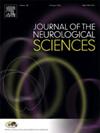评估神经移植手术后运动单元的特性
IF 3.6
3区 医学
Q1 CLINICAL NEUROLOGY
引用次数: 0
摘要
神经移植手术(NTS)显示了恢复脊髓(SCI)和周围神经损伤(PNI)瘫痪肌肉运动的希望。然而,运动结果各不相同,影响反应者和无反应者的神经生理因素仍不清楚。由于NTS的基本目标是通过创造新的运动单元(MU)来重建瘫痪肌肉的神经,我们研究了脊髓损伤和PNI患者NTS后MU的特性。对9名参与者(3例SCI, 6例PNI, 50.3±13.9岁)和nts后18个月进行评估,并与年龄匹配的对照组(SCI)或对侧肢体(PNI)进行比较。我们使用了一种复杂的信号处理软件,称为基于分解的定量肌电图(DQEMG)和近纤维肌电图来检查从低强度收缩期间记录的针肌电图信号中采样的MU特征。NTS肌MU电位(MUP)更大,近纤维MU电位(NFM)比对照组更分散。与对照组相比,NTS肌肉的神经肌肉连接不稳定性测量值更大(p <;0.05)。两组间MU、MUP各相、各匝放电率无显著差异(p >;0.05)。总的来说,这些数据表明,术后再神经移植的质量需要进一步研究,因为它是运动结果的潜在调节因素,成功再神经移植所需的时间可能比目前预测的要长。本文章由计算机程序翻译,如有差异,请以英文原文为准。
Evaluating motor unit properties after nerve transfer surgery
Nerve transfer surgery (NTS) shows promise in restoring movement to muscles paralyzed by spinal cord (SCI) and peripheral nerve injury (PNI). Yet, motor outcomes vary, and the neurophysiological factors influencing responders and non-responders remain unclear. As the fundamental goal of NTS is to reinnervate paralyzed muscles by creating new motor units (MUs), we examined MU properties after NTS for individuals with SCI and PNI. Nine participants (3 SCI, 6 PNI, 50.3 ± 13.9 years) >18 months post-NTS were evaluated and compared to either age-matched controls (SCI) or the contralateral limb (PNI). We used a sophisticated, signal processing software known as Decomposition-Based Quantitative Electromyography (DQEMG) and near-fiber EMG to examine MU characteristics sampled from needle electromyography signals recorded during low-intensity contractions. The NTS muscle MU potentials (MUP) were larger, and near-fiber MUPs (NFM) were more temporal dispersed than controls. Measures of neuromuscular junction instability were greater in NTS muscles compared to controls (p < 0.05). Firing rates of MU, and MUP phases and turns were not different between groups (p > 0.05). Overall, these data suggest the quality of reinnervation post-surgery requires further investigation as a potential mediator of motor outcome and the required time for successful reinnervation may be longer than currently predicted.
求助全文
通过发布文献求助,成功后即可免费获取论文全文。
去求助
来源期刊

Journal of the Neurological Sciences
医学-临床神经学
CiteScore
7.60
自引率
2.30%
发文量
313
审稿时长
22 days
期刊介绍:
The Journal of the Neurological Sciences provides a medium for the prompt publication of original articles in neurology and neuroscience from around the world. JNS places special emphasis on articles that: 1) provide guidance to clinicians around the world (Best Practices, Global Neurology); 2) report cutting-edge science related to neurology (Basic and Translational Sciences); 3) educate readers about relevant and practical clinical outcomes in neurology (Outcomes Research); and 4) summarize or editorialize the current state of the literature (Reviews, Commentaries, and Editorials).
JNS accepts most types of manuscripts for consideration including original research papers, short communications, reviews, book reviews, letters to the Editor, opinions and editorials. Topics considered will be from neurology-related fields that are of interest to practicing physicians around the world. Examples include neuromuscular diseases, demyelination, atrophies, dementia, neoplasms, infections, epilepsies, disturbances of consciousness, stroke and cerebral circulation, growth and development, plasticity and intermediary metabolism.
 求助内容:
求助内容: 应助结果提醒方式:
应助结果提醒方式:


